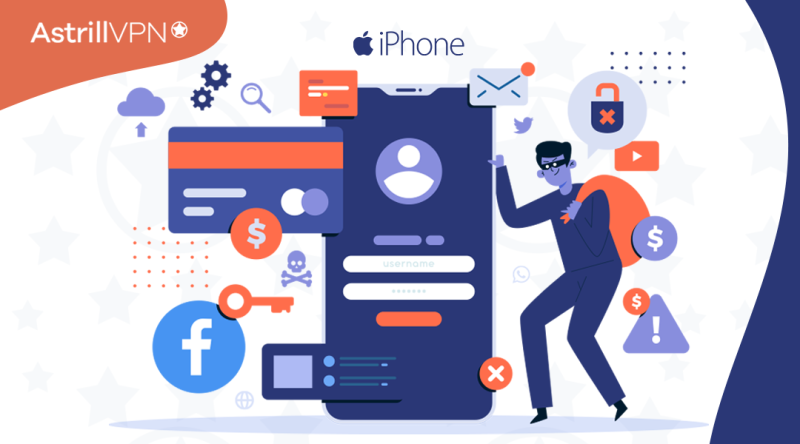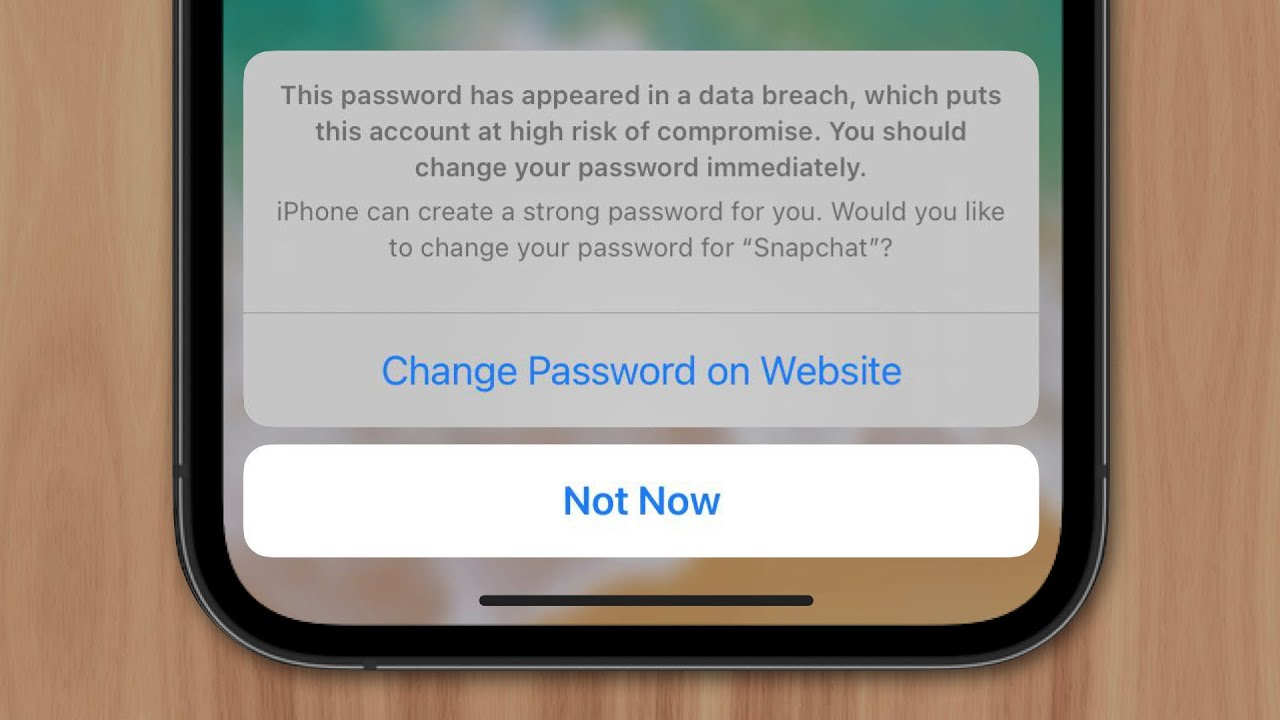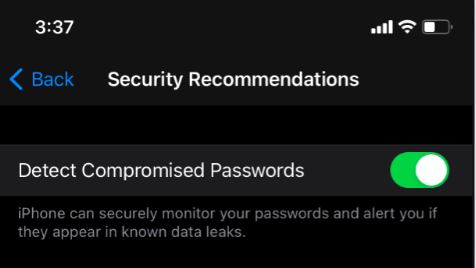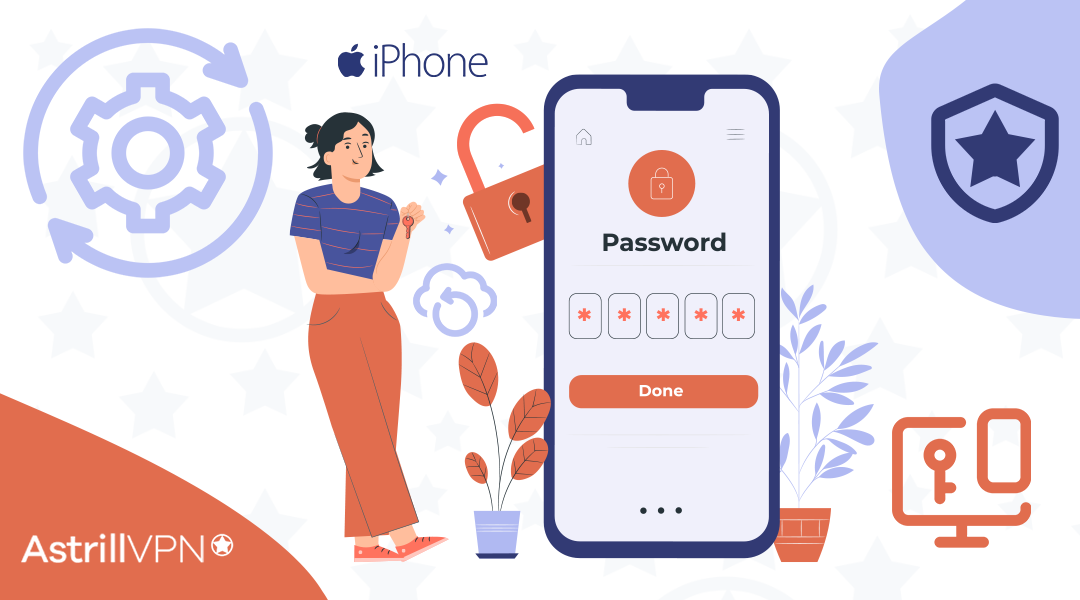What is a data leak on iPhone? Common reasons and tips for prevention

Bisma Farrukh

iPhones are one of the most popular smartphones on the market. They’re known for their sleek design, intuitive user interface and robust security features that protect your data. But like all digital devices, iPhones aren’t immune to data leaks. A data leak on iPhone occurs when data stored on your device escapes outside of its intended boundaries. Data leaks can occur in a variety of ways but one of the most common and arguably most serious is a breach caused by malicious software or hackers.
In this article; we’ll explore everything you need to know about data leaks on iPhones and what you should do if you suspect your phone has been breached.

Table of Contents
What Is a Data Leak?
If you’re an iPhone owner, you may have heard “what is a data leak on an iPhone” before and wondered what it meant. Simply put, a data leak occurs when your personal data is exposed without your knowledge. It can include any sensitive information stored on your phone such as passwords, messages, banking information and more.
In 2019, almost 1279 users’ data was compromised by iPhone data leak and it has affected 165 million users approximately. In 2018, 1175 users’ data was compromised and it has affected 222 million users.
How do data leaks happen?
Data leaks are an unfortunate but common occurrence. There are many ways data leaks can happen, whether by accident or on purpose.
- One common cause of data leaks is human error. Employees accidentally sending sensitive information to the wrong person via email is a frequent mistake. Sometimes employees lose physical devices like laptops or USB drives that contain unencrypted sensitive data. These types of data leaks are unintentional but still cause major problems.
- Hackers and cybercriminals are another major source of data leaks. Hackers use techniques like phishing scams, malware, and exploiting software vulnerabilities to gain unauthorized access to data. Once they have accessed the data, they may sell it on the dark web or use it for fraud and identity theft. Large companies and organizations are prime targets for hackers seeking valuable customer data.
- Poor data security practices can also enable data leaks. When companies do not properly encrypt sensitive data, use strong passwords and authentication, update security software, or train employees on security best practices, they leave “cracks in the armor” for data thieves to exploit. Carelessness with data security is a common problem.
Data leaks happen through human error, hackers, and lax security practices. Regardless of the cause, when sensitive data is leaked, it can cause major headaches for companies in the form of fines, lawsuits, reputational damage, and lost customers. That is why companies must remain vigilant about data security and try to minimize the chances of a preventable data leak.
How Does an iPhone Data Leak Occur?
Data leaks occur when a malicious actor, such as a hacker infiltrates your iPhone’s security system to gain access to your personal data. This can be done by exploiting any vulnerabilities in the system such as outdated software or hardware, or by using malware. Once a hacker gains access, they can steal and misuse your data for any number of reasons.
It’s important to note that there are two types of iPhone data leaks: passive and active.
- Passive data leaks occur when an iPhone is left unlocked, allowing anyone with the device to view stored information without the user knowing.
- Active data leaks happen when someone uses malicious software or tactics to access another person’s phone and extract their personal information.
Data leaks can occur in a variety of ways, such as:
1. Unsecured Wi-Fi networks
When using public Wi-Fi networks, cybercriminals can intercept unsecured connections and gain access to your data.
2. Phishing attacks
Cybercriminals often use malicious links or malicious software in emails or other forms of communication to steal login credentials or other sensitive information.
3. Malicious apps
Malicious apps can also be used to gain access to your data. These apps can track keystrokes on the phone and access contact lists, messages, and other private information.
No matter what type of leak occurs, it’s essential that you’re prepared with ways to protect your phone from falling victim to a data leak in the first place.
Common Misconceptions About iPhone Data Leaks
A data leak on the iPhone can sound like a very serious issue but rest assured, there are many misconceptions about them out there. Let’s take a look at some of these common misunderstandings.

Misconception 1: All iPhone Data Leaks are Dangerous
While it’s true that some data leaks can put you at risk, it doesn’t mean that all of them are dangerous. Some of them don’t even involve confidential information to begin with. A basic example is accidental information sharing by having your Location Services turned on.
Misconception 2: All 3rd-Party Apps Collect Your Data
A lot of people think that just by installing a 3rd-party app, their data is now at risk of being leaked. It’s true that many apps use your personal data as part of how they function but they usually have permission-based access and will not access your files without permission. So, if you only install apps from the App Store or trustworthy sources then you should be fine.
Misconception 3: There’s Nothing I Can Do To Avoid A Data Leak
Data leaks aren’t always avoidable but there are steps you can take to protect yourself. Keeping up with security updates for your iPhone software and using strong passwords for accounts are very important steps in improving the security of your device. Additionally, turning off Location Services when not in use is also helpful in reducing the odds of a data leak from happening.
How to Find Out if Your iPhone Has Been Affected by a Data Leak?
If you’re worried your iPhone has been affected by a data leak, there are a few things you can do to check.
1. Check for Unusual Activity
One of the first signs of a data leak is if you notice any suspicious activity on your phone. This may include unexplained charges to your bank account or strange texts sent from your number. If you’re concerned about any activity that looks out of the ordinary, it’s best to take action immediately.
2. Check app permissions
Another easy way to tell if your iPhone has been hacked is to go into Settings and take a look at all the apps installed on your phone. If any of them have permissions that seem unusual like accessing the device’s GPS or microphone then they may have been granted access by someone other than you. It’s essential to delete any apps that don’t look right and change all your passwords if necessary.
3. Security software scans
Using security software can help detect any issues with your device’s security settings as well as alerting you if any data leaks have happened in the past. They can also help detect malware and malicious software so it’s worth downloading a reliable security program on your phone if you still need to!
Signs That Your iPhone Might Have Leaked
Do you suspect that your iPhone has leaked data? It’s important to know what to look out for so that you can identify if something is wrong with your device. Here are a few signs of a possible data leak on an iPhone:
1. Unusually high data usage
One sign of a potential data leak is when you notice that your monthly data usage is unusually high. If you notice that your iPhone is using more data than usual then it could be evidence of a potential issue.
2. Unexpected notifications and emails
Another sign of data leakage is when you receive unexpected notifications or emails from services or apps that should not be sending them. For instance, if you start getting emails from unknown contacts or about topics related to services and apps that you don’t use then this could be a sign of data leakage.
3. Unknown apps showing up in search results
If you notice that unknown apps start appearing in search results on your iPhone then this could also be an indication of a data leak. It’s important to be aware of any new apps that appear on your device as these may have been installed without your knowledge and could be responsible for the leak.
These are three potential signs that suggest there might have been a data leak on your iPhone. If you detect any of these signs; it’s important to take action right away and make sure the issue is taken care of before it causes any more damage.
Tips to Protect Yourself Against an iPhone Data Leak
So what can you do to protect yourself against an iPhone data leak? It’s important to take steps now rather than waiting until something happens.

1. Protect Your Device with strong Password
One of the most important things you can do is to protect your device with a password. Even if someone has your phone, they won’t be able to access it without your password. Make sure your password is complex and that you change it regularly.
2. Enable Two Factor Authentication
Two factor authentication (2FA) adds an extra layer of security by requiring both a unique code and the phone’s password to access iCloud or other data. This means that even if someone does have your phone, they will still need something else; either an additional code or another device in order to access this data.
3. Regularly Update Your Phone
Updates are critical for protecting yourself against an iPhone data leak because they contain bug fixes and security patches that help keep devices safe from malicious attacks. Make sure you regularly install the latest updates as soon as they become available.
4. Backup Your Data Regularly
Backing up your data means that it won’t be lost forever in the event of a theft or other malicious attack. Many people opt for an automated backup process which backs up their photos, contacts, messages and other information on a regular basis so it is always safely stored in case something happens to the device.
5. Use a Reliable VPN
Using a VPN can protect your data. Install iPhone App from AstrillVPN on your device which can provide military-grade level encryption and protection from online threats. Its amazing pricing plans with VIP and business plans provide you with the best monthly and annual payment plans. A VPN service will also allow access to websites that may be blocked in your country and spare your sensitive data from third parties like ISPs and government agencies.
How do you check breached accounts on an iPhone or iPad?
If you get iphone data leak notification or your Apple ID password has been compromised and your iPhone or iPad accounts may have been breached, there are a few steps you can take to check and secure your devices.
- First, open your Settings app and go to “Passwords & Accounts.” Under your Apple ID, tap “Password & Security.” Here you can change your Apple ID password. Choose a strong, unique password of at least 12 characters including numbers, symbols, and uppercase and lowercase letters. Changing your password is the most important step to securing your accounts.
- Next, go back to “Passwords & Accounts” and look under each individual app account listed, like Facebook, Gmail, Dropbox, and any others you have linked to your device. Check if the passwords for these accounts match the one you just changed for your Apple ID. If so, you’ll want to change those passwords as well, ensuring they are also unique and strong.
- You can also enable two-factor authentication for extra security for your Apple ID and any other accounts that offer it. This requires an authentication code sent to a trusted device every time you log in, making it harder for a hacker to access your account, even with your password.
- Finally, scan your device for any malware or viruses that could be monitoring your activity or passwords. On iOS, go to “General” in your Settings, then “Device Management” to see if any unauthorized profiles are installed.
How do you change all the passwords that were compromised?
The first thing you need to do for compromised passwords for iPhone is to change them immediately. Once a password is known by unauthorized individuals, you need to act fast before they take advantage of that knowledge.
For your iPhone, you’ll need to change the passcode for unlocking your device, as well as any passwords for apps and accounts connected to your iPhone.
To change your iPhone passcode:
- Go to Settings > Touch ID & Passcode (or Settings > Passcode if you don’t have Touch ID).
- Enter your current passcode.
- Scroll down and select Change Passcode.
- Enter your current passcode again and then enter your new passcode twice to confirm it.
- Select Done.
For app passwords:
- Open the app and tap the “Forgot Password” or “Change Password” option.
- Enter your current password and then enter your new password twice to confirm it.
- Make sure your new password is complex and unique.
For account passwords:
- Log in to your account settings through a web browser on a computer.
- Select the “Change Password” option.
- Enter your current password and then enter your new password twice to confirm it.
- Make sure to update the password on any other devices where you’re logged in to that account as well.
By quickly changing all compromised passwords, you can minimize the risk of unauthorized access to your iPhone, apps and accounts. Make your new passwords complex and unique to increase security.
What to Do When Your Password Appears in a Data Leak?
Here are some measures you can take if you find your password appeared in a data leak:
1. Change Your Password
The first thing you should do is change your current password. It’s incredibly easy to do and could give you the peace of mind knowing that the person who has access to your credentials can’t use them anymore. Make sure to choose a strong, unique password with at least eight characters including upper and lower-case letters, numbers and symbols to help keep your account safe.
2. Use Two-Factor Authentication
Two-factor authentication is a great way to make sure that access is only granted with something that only you have in addition to something you know (like a password). This means that anyone trying to gain access to your account must also prove their identity with another form of authentication such as a code sent via text message or an email confirmation.
3. Be Mindful of What You Share Online
It’s important to be mindful about what personal information about yourself that you share online as this data can be used by others for malicious purposes such as phishing scams or social engineering attacks. Avoid sharing any sensitive information such as financial or account details on social media or other websites where they can easily be accessed by outsiders.
What to do if you receive an Apple Data Leak Notification?
So if you receive an Apple data leak notification, the first thing to do is take a deep breath and try not to panic. It’s important to stay calm since it doesn’t necessarily mean that your data has been compromised.
Researching the Notification
Once you’ve taken a deep breath, start researching the notification. You can do this by looking at the Apple security page or looking up news articles to see if other users have received similar notifications. This will help you get a better understanding of what’s going on.
Check your recent activity log
You should also check your recent activity log to see which data was accessed and by whom. You should be able to find this log on your account settings page or in your Apple ID profile page. It’s important that you keep track of changes in case something does end up being fishy.
Contact Apple Support
If something looks suspicious, reach out to Apple Support as soon as possible. They’ll be able to review your account and provide additional information about the issue and what steps need to be taken for optimal protection going forward.
Apple will also provide further guidance on how to keep your information secure moving forward. Following these steps can help prevent future data leaks from happening again so it pays off in the long run!
How to Protect Yourself From Further Data Leaks?
It’s not too late to protect yourself from a data leak on your iPhone. Here are some steps to make sure it doesn’t happen again:
- Stay Updated
Make sure your phone is updated with the latest versions of iOS because that can help plug security holes which could lead to any future data leaks.
- Strengthen Passwords
Create stronger passwords for your device, accounts and services using a combination of symbols, numbers and letters. If you’re using two-factor authentication (which we recommend!), use an app like Google Authenticator or Authy instead of your phone number.
- Don’t Jailbreak Your Phone
Jailbreaking your phone is never a good idea. It can give hackers backdoor entry into your device which increases the odds for data leakage.
- Use A Security App
Installing a security app and enabling extra layers of protection is always a great idea. A reliable security app should be able to detect threats in real-time and alert you when something suspicious happens.
FAQs
We know there are a few questions that might still be lingering in your mind so here are some of the most commonly asked ones.
Q: Is Apple’s data leak warning real?
A: Yes, Apple does send out notifications when it detects potential data leaks on iPhones. They do this in order to protect their users and to make sure they are aware of any potential risks they might be facing.
Q: Is a Data Leak a hacker?
No, a data leak is not necessarily caused by hackers. It can also be caused by other factors such as an app that is misconfigured or user error. You may not even be aware that you’ve caused a data leak until you receive an alert from Apple about it.
Q: Is my iPhone password data leak legit?
It’s hard to tell for sure if your iPhone password data leak is legitimate or not without further investigation but if Apple has sent you a notification about it then chances are it is real. In this case, you should take steps to ensure the safety of your account and contact Apple Support for more information.
Conclusion
The main takeaway here is that data leaks have become more common on iPhones and the consequences can be serious. While it’s impossible to completely protect your data from unauthorized access, by following above mentioned measures you can take to reduce your risk of falling victim to a data leak. Be aware of any data leaks that may have occurred and check to see if your information was included. Taking these steps will help keep your data secure and protect you from the consequences of a data leak.

No comments were posted yet